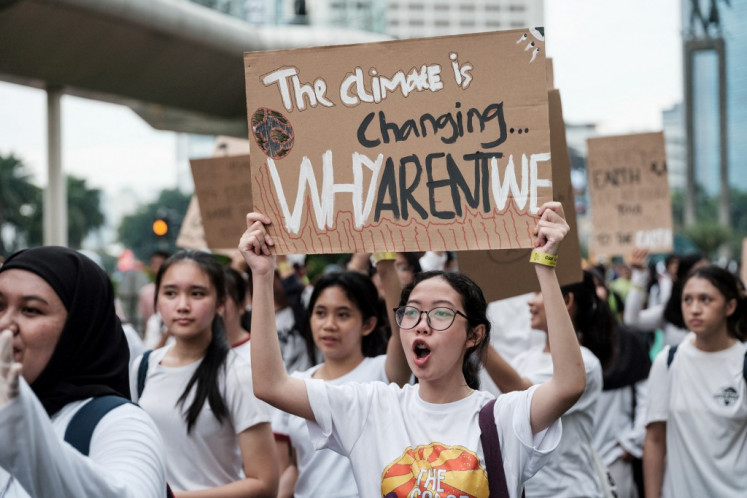The future of mobility: Not one solution, but many
In 1807, when patenting the first hydrogen-powered engine, François Isaac de Rivaz could have been forgiven for thinking he had found the future of transport
Change Size

I
n 1807, when patenting the first hydrogen-powered engine, François Isaac de Rivaz could have been forgiven for thinking he had found the future of transport.
Yet here we are, more than 200 years later, still wrestling with the same question. What will drive us tomorrow?
Some still say hydrogen. Some say battery electric power. Some say natural gas. I say we must explore all options. I believe that the future of transport will be shaped not by one solution, but many.
De Rivaz’s hydrogen car may not have been a success, but we can learn from his inventiveness, his vision, his will to do things differently. Because when it comes to the future of transport, we need every solution we can get.
We face a pressing challenge. Transportation accounts for more than a quarter of the world’s energy use and one-fifth of global energy-related CO2 emissions.
There are a billion cars on the roads today and this is expected to double by 2040. We must all consider this region’s energy future, and how society will meet demand while reducing emissions to tackle climate change and air pollution.
In October, the Intergovernmental Panel on Climate Change (IPCC) outlined the need for an ever more rapid transition to a lower-carbon world.
[...] here we are, more than 200 years later, still wrestling with the same question. What will drive us tomorrow?
This begins with CO2 emissions falling sharply from 2020 onwards. That is barely a year away. We need multiple solutions because no one solution can meet all needs, in all places at all times.
That is certainly a key conclusion of Shell’s latest scenario work, which was cited by the IPCC. Our Sky scenario sets out a challenging but plausible route the world could follow to meet the aims of the Paris Agreement and restrict the rise in global average temperature in this century to well below 2 degrees Celsius.
Given its significant impact, the transport sector must rise to this challenge.
Take battery electric vehicles. Indonesia is considering tax incentives for battery makers to increase investment and boost local industry. China accounts for about half of global production and has the highest number of electric cars on the road.
Shell is increasing its activities, too.
We, for instance, acquired NewMotion, one of Europe’s largest providers of charge points, operating more than 40,000 private points for homes and businesses.
When it comes to hydrogen as a fuel, it has potential for heavy freight, including rail.
Japan’s vision of a “hydrogen society” begins in 2020, with plans for fleets of hydrogen fuel cell vehicles serving the Tokyo Summer Olympics.
Shell, too, is increasing its investment in hydrogen.
In Germany, for example, our plans include a joint venture to establish a nationwide network of 100 filling stations by 2019.
Liquefied natural gas (LNG) also has potential in trucking and shipping. China, for example, has the world’s largest fleet of vehicles running on LNG.
Last year, the number of LNG-powered trucks it produced rose to 96,000. Shell now has one LNG filling station in China through a joint venture, and nine in Europe.
We have also signed shipping deals with Carnival to supply the world’s first LNG-powered cruise ships, and with Sovcomflot to supply the first LNG-powered oil tankers.
And we also recognize the potential of advanced biofuels, which could help the aviation sector in the future.
In Indonesia, the B20 regulation is a positive step towards the country’s emission reduction targets. Shell is already one of the world’s biggest producers of biofuels through our joint venture with Brazil’s Raízen.
The company produces about 2 billion liters a year of ethanol from sugarcane and continues to explore advanced biofuels.
Digitalization, too, is creating potential for many other solutions. We see a future in which autonomous vehicles are connected and working as fleets.
It is a future of innovative business models, from ride sharing to mobility-on-demand. It is a future we could one day see on the streets of Jakarta.
Together with carmakers — and policymakers — we can continue to improve the efficiency of engines. And in shipping, Singapore is one of three ports where Shell is testing our new ultra low sulfur fuel oil.
There is much happening, but if we want to meet the challenges posed by the future of transport, we must work together on a multitude of solutions.
If we focus on only one solution, we risk the fate of de Rivaz’s hydrogen engine. And we must not let brave ideas stall, just when we need them most.
___________________
The writer is downstream director of Royal Dutch Shell.









